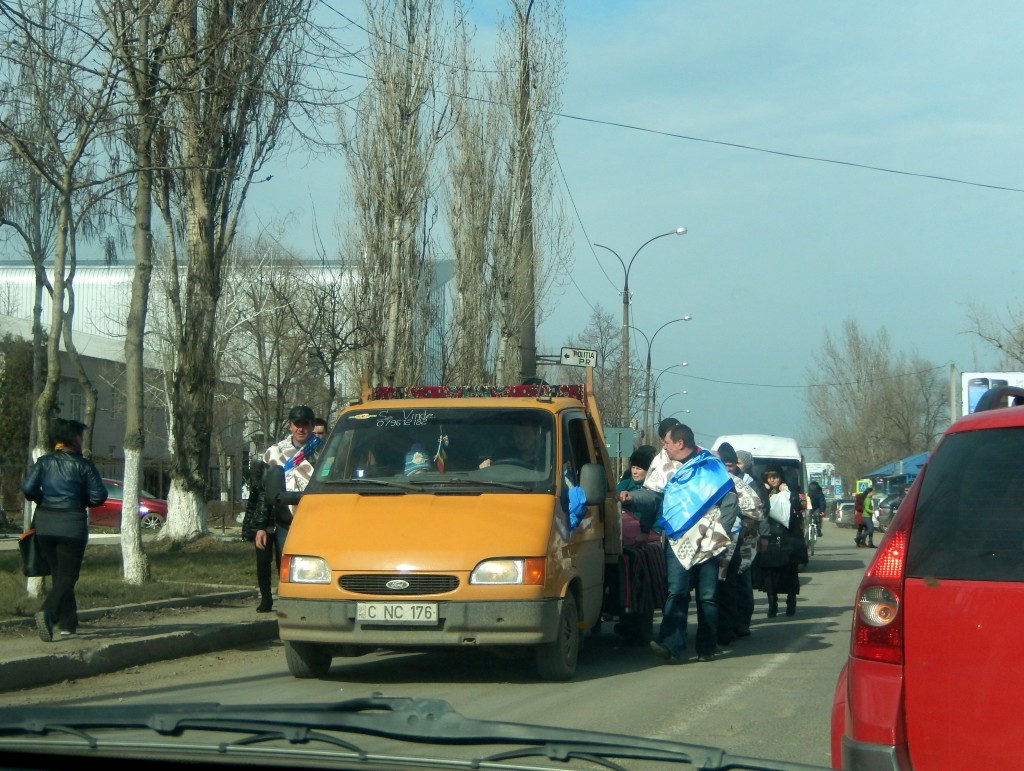To be perfectly honest, I didn’t know anything about the country of Moldova prior to moving to Europe. Until starting research for this trip, the only thing I did know was that Moldova has a strong black market for organ sales. Not much positive info, huh? Well, hopefully this post will provide some context to the small country of Moldova, as well as some of the interesting things we learned/experienced during our trip!
Moldova is the poorest country in Europe and was once part of the former Soviet Union. Located between Romania and Ukraine, this tiny country is about the size of Maryland. After the collapse of the Soviet Union, Moldova declared independence in 1991, but continued to seat communist leaders until 2009.
The population of Moldova is debatable (somewhere between 3 and 4 million), depending on whose perspective you hear it from. Despite Moldova’s small size, it remains a “divided” country. Along the eastern border of Moldova there is a small area called “Transnistria”, which is part of the country…but really not. This region has its own currency, government, border control, and military and was the cause of civil war within Moldova in 1992. Transnistria is supported financially by Russia and wants to be part of Russia again, but Moldova wants to regain control. Some Transnistrians have Moldovan citizenship, while others have Russian. The financial backing from Russia makes prices in Transnistria cheaper than in Moldova, so a lot of Moldovans cross the border to buy groceries, gas, and other wares. We were told we could visit the area, but the American Embassy/Military would not be responsible if anything happened to us there. We passed.
A portion of Moldovan population lives in “villages”. The villages have no paved roads, no indoor plumbing, and minimal electricity. Residents sustain themselves from their own gardens and sell any extra produce they have along the main street. We were told that the villages sold the freshest and most organic meat one could buy. We saw lots of chickens/geese being sold on tiny tables along the road, as well as some lambs who were still…well, let’s say they hadn’t been dead long.
Education is a problem in the villages. Some have one school house where kids go to school, but in many villages there is no school at all. For a while the government provided transportation for children so they could get to the closest school, but eventually the government decided that they didn’t have enough money for said transportation. So the kids just stopped going to school because they had no way to get there. Not good, not good at all.
The small town of Căuşeni, Moldova is where we were based for our week of teaching. Located about an hour from the capital town of Chișinău, Căuşeni has a population of about 20,000 people. Here is where we lived that week:
Here is the building across the street. It looks abandoned, right? Or like a construction site? Surprisingly, this building is inhabited. The people didn’t even live in the junked-out bus behind the fence. They lived in the actual building.
Căuşeni has a saving grace, and her name is Svetlana. Svetlana is the head of the NGO we worked with in Căuşeni and pretty much a one-woman-show. She said that most people leave Moldova in search of a better life and never come back. She admits that she did the same thing, spending time in Western Europe in her early twenties. However, her time away from Moldova actually drove her back home with a passion for change. Through the NGO, Svetlana works tirelessly to improve the opportunities of young Moldovans and make change in her native land. Born in 1980, she has lived under communism, seen the collapse of the Soviet Union, experienced the turmoil in Moldova through the 90’s, and still believes that her native land can be a place of opportunity and prosperity.
Not only does Svetlana provide English language opportunities for students, but she organizes and finds funding for teenagers to travel, she connects students with leadership and development conferences throughout Europe, and she has plans to develop programs for mentally disabled individuals. She was so interesting to meet and talk to and her dedication to students and Moldova was truly inspiring.
Between talking with Svetlana, the Cioban family, and the students, we learned so much about Moldovan culture and traditions. I’ll share the most surprising tidbit, which we experienced on our last day in Căuşeni. It is a bit morbid, but the Moldovans have a lot of rituals and holidays involving death, so I guess it’s just par for the course.
When someone dies in Moldova, there is a funeral procession through town. First there are cross bearers, who hang items of clothing from the deceased from their crosses. Then comes the vehicle, with six [what we would equate to as] pall bearers, who walk next to the vehicle. Finally, the family, friends, and neighbors of the deceased walk behind the vehicle. What caught us off guard was the fact that the body of the deceased lays on the back of the vehicle, which is really a pickup truck. Svetlana told us that it serves as proof that the person is actually dead. We passed two processions in one day. I guess it was a good day to convince all the naysayers that you had in fact walked into the light. (Inappropriate attempt at humor? Sorry…blame it on the homemade wine!)
Alright, there is some Moldovan history and culture in a nutshell. Maybe I should get a job at their tourist bureau now! 🙂




